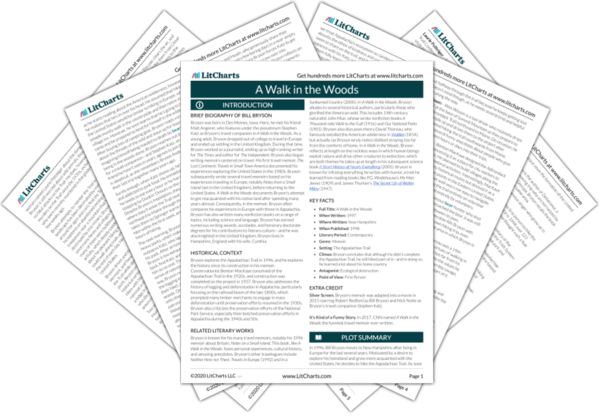In Shenandoah, Bryson reflects bitterly on all the ways in which human beings have damaged the natural environment, including acid rain and pollution. Industry, it seems, is fast destroying the natural ecosystem—and hunting is also driving many animals to extinction. All this reminds the reader again that if there’s any real danger in Appalachia, it’s the human beings, not the wild animals (like bears) that Bryson obsesses over.
